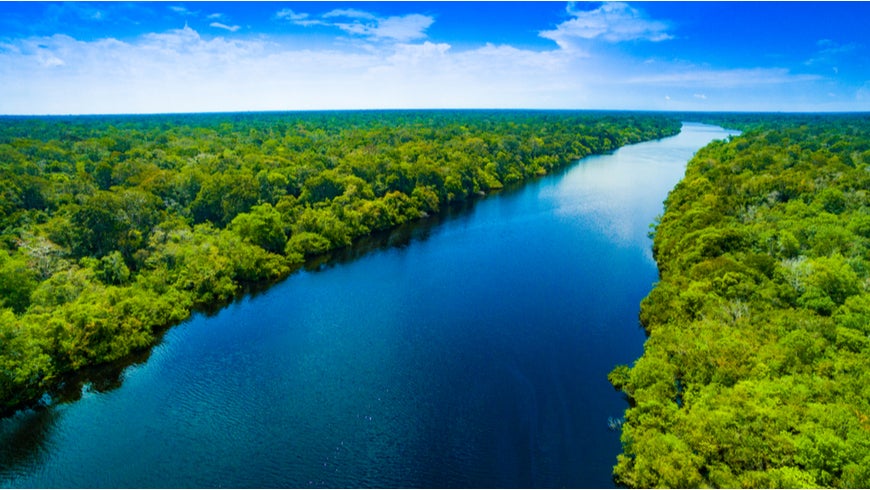


While documented cases are rare, and there is some debate over whether these types of injuries occur at all, there is at least one documented case of a man requiring surgery to remove a candiru from his urethra-which had also attempted to burrow through to his testicles. Candiru are small, parasitic, freshwater catfish famous for launching themselves up the urethra of anyone foolish enough to urinate in the river, and getting lodged into the urinary tract because of the spines that run along their backs. The Amazon doesn’t only breed giants, and the small creatures are just as terrifying, at least if you believe the stories that surround them. While their numbers are dwindling, mainly due to human intervention, they are among the most capable predators in the Amazon rain forest, hence their local name of “river wolves.”

One family was seen devouring a 1.5 meter (five foot) caiman, which took them about 45 minutes. They hold their own against caiman as well. Don’t be fooled by their cute looks, though-they are more than a match for the other animals on this list, with groups of them having been spotted killing and eating an anaconda. Their diet primarily consists of fish and crabs, which they hunt in family groups of three to eight members, and they can eat up to four kilograms (nine pounds) of seafood per day. They are the longest examples of the weasel family, with adult males reaching up to two meters (over six feet) from head to tail. Heading up the “exactly what it says on the tin” category are the giant otters, who, as their name suggests, are very large otters. These fish are so vicious that even their tongue has teeth. They can reach 2.7 meters (nine feet) in length and weigh up to 90 kilograms (200 lbs). Arapaima tend to stay close to the surface, because they need to breathe surface air in addition to taking in oxygen through their gills, and make a distinctive coughing sound when they emerge for air. Encased in armored scales, they think nothing of living in piranha-infested waters-and they are pretty effective predators themselves, feeding on fish and the occasional bird.

Preferring shallower waters that allow them to stealthily sneak up on their prey, they tend to live in offshoots of the Amazon rather than the river itself.Īrapaima, also known as “pirarucu” or “paiche,” are gigantic carnivorous fish that live in the Amazon and surrounding lakes. They are not venomous but instead use their immense muscular power to constrict and suffocate their prey, which includes capybara, deer, caiman, and even jaguars. While reticulated pythons are actually longer, green anaconda are far heavier the females, generally larger than males, can reach 250 kilograms (550 lbs), grow to nine meters (over 29 feet) long and reach 30 centimeters (12 in) in diameter. If these terrifying animals fascinate you, you can always find more in Walking the Jungle: An Adventurer’s Guide to the Amazon at !Ĭontinuing with the theme of gigantic reptiles, the largest snake in the world makes its home in the Amazon: the anaconda. This particular caiman had been living under her houseboat for eight months, evidently waiting for the chance to strike. In 2010, a biologist named Deise Nishimura was attacked by a caiman while cleaning a fish on her houseboat, and while she managed to fight it off, it took one of her legs with it. That means they are basically the kings of the river-they eat nearly anything they can get their teeth into, including piranhas, monkeys, perch, deer, and anaconda. They can grow up to six meters (20 feet) long, with bigger, heavier skulls than Nile crocodiles, and are the apex predator in the Amazonian waters. 10Black CaimanĪ black caiman is basically an alligator on steroids. In the depths of the Amazon River, the largest river in the world, live creatures so amazing and so terrifying, that they make Jaws look like a nice, relaxing swim in the ocean. But it’s home to more than just the animals that prowl, swing, and slither through the trees. The Amazon rain forest is an immense ecosystem, providing a habitat for creatures as weird and wonderful as the jaguar, the poison dart frog and the Jesus lizard.


 0 kommentar(er)
0 kommentar(er)
